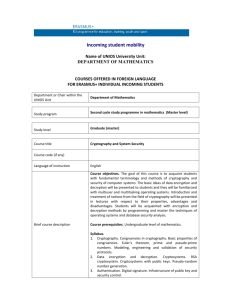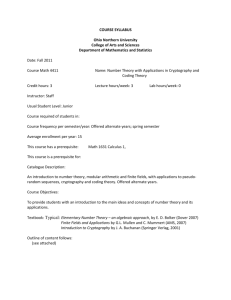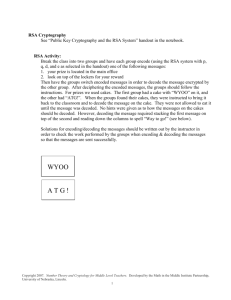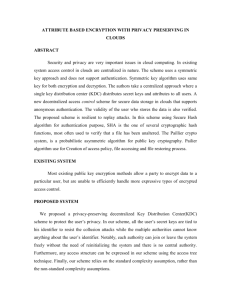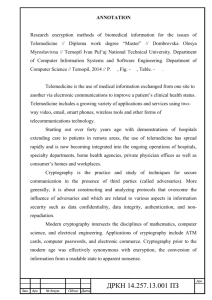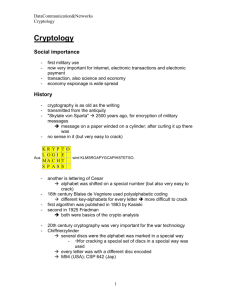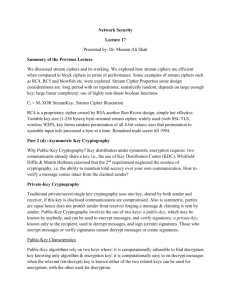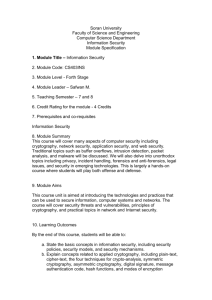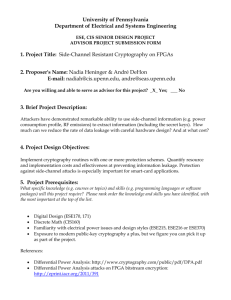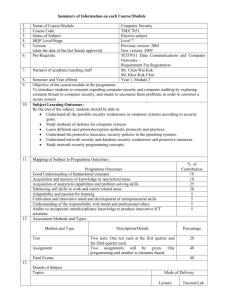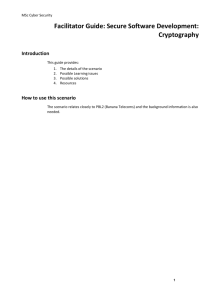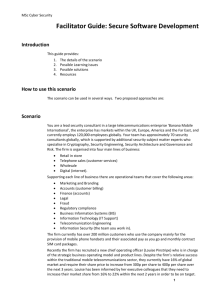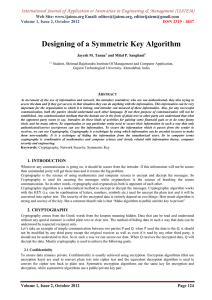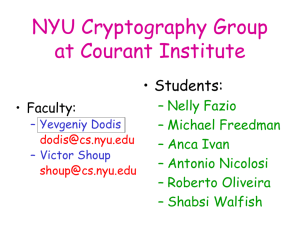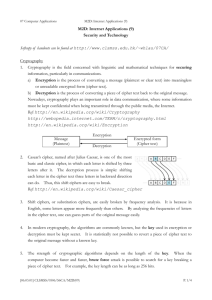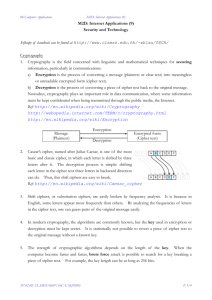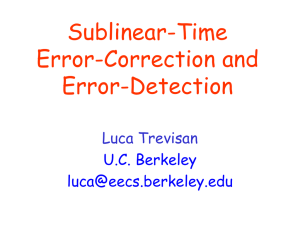Cryptography Extra Credit - Lincoln Park High School
advertisement
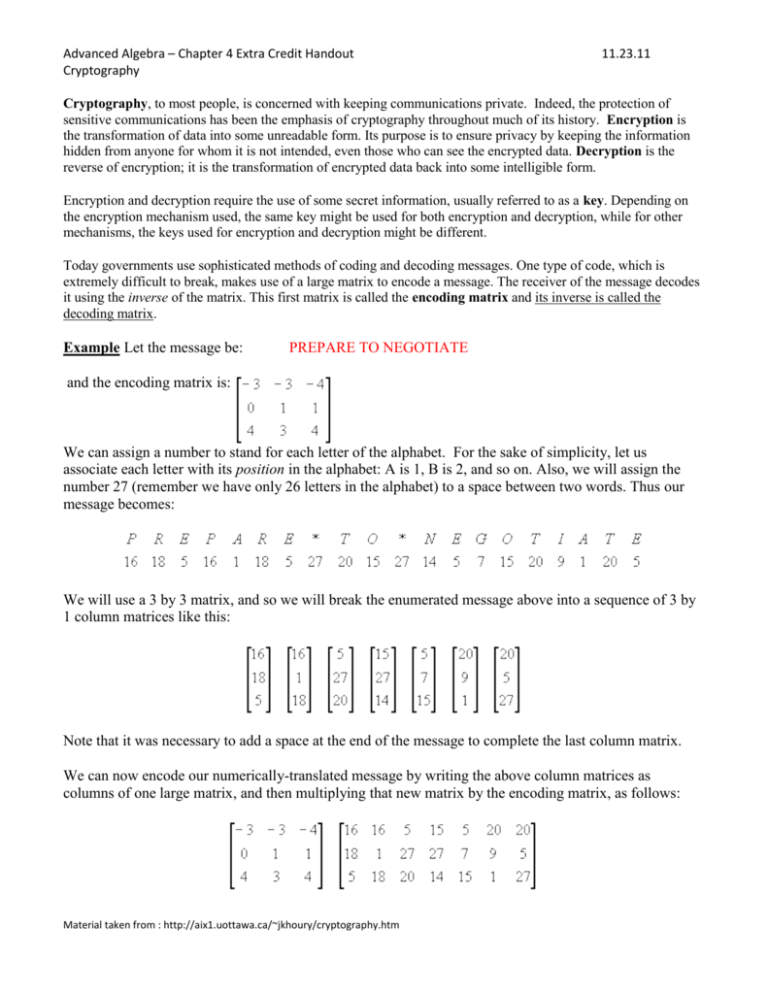
Advanced Algebra – Chapter 4 Extra Credit Handout Cryptography 11.23.11 Cryptography, to most people, is concerned with keeping communications private. Indeed, the protection of sensitive communications has been the emphasis of cryptography throughout much of its history. Encryption is the transformation of data into some unreadable form. Its purpose is to ensure privacy by keeping the information hidden from anyone for whom it is not intended, even those who can see the encrypted data. Decryption is the reverse of encryption; it is the transformation of encrypted data back into some intelligible form. Encryption and decryption require the use of some secret information, usually referred to as a key. Depending on the encryption mechanism used, the same key might be used for both encryption and decryption, while for other mechanisms, the keys used for encryption and decryption might be different. Today governments use sophisticated methods of coding and decoding messages. One type of code, which is extremely difficult to break, makes use of a large matrix to encode a message. The receiver of the message decodes it using the inverse of the matrix. This first matrix is called the encoding matrix and its inverse is called the decoding matrix. Example Let the message be: PREPARE TO NEGOTIATE and the encoding matrix is: We can assign a number to stand for each letter of the alphabet. For the sake of simplicity, let us associate each letter with its position in the alphabet: A is 1, B is 2, and so on. Also, we will assign the number 27 (remember we have only 26 letters in the alphabet) to a space between two words. Thus our message becomes: We will use a 3 by 3 matrix, and so we will break the enumerated message above into a sequence of 3 by 1 column matrices like this: Note that it was necessary to add a space at the end of the message to complete the last column matrix. We can now encode our numerically-translated message by writing the above column matrices as columns of one large matrix, and then multiplying that new matrix by the encoding matrix, as follows: Material taken from : http://aix1.uottawa.ca/~jkhoury/cryptography.htm Advanced Algebra – Chapter 4 Extra Credit Handout Cryptography 11.23.11 which gives the matrix The columns of this matrix give the encoded message. The message is transmitted in the following form: To decode the message, the receiver writes this string as a sequence of 3 by 1 column matrices and repeats the technique using the inverse of the encoding matrix. That decoding matrix is: (We will be studying inverses shortly, so soon you’ll be able to compute a decoding matrix like this one by yourself!) Thus, to decode the message, perform the matrix multiplication and get the matrix . The columns of this matrix, written in linear form, give the original message: EXTRA CREDIT ASSIGNMENT: You can fill in ONE zero earned on homework this year with full credit (2/2) for completing the following task correctly. Write a one sentence phrase (with no fewer than 10 letters and no more than 30) and encrypt it using the encoding matrix given on this handout. You must show all of your work to earn full credit. This assignment is due in class on Monday, November 28th. Material taken from : http://aix1.uottawa.ca/~jkhoury/cryptography.htm
